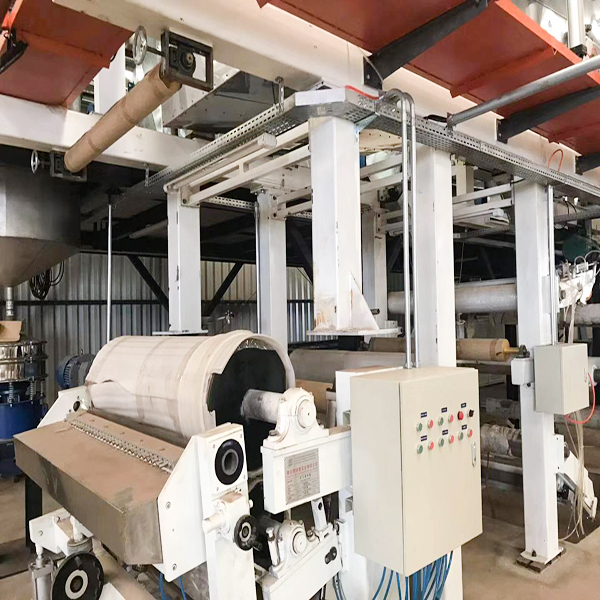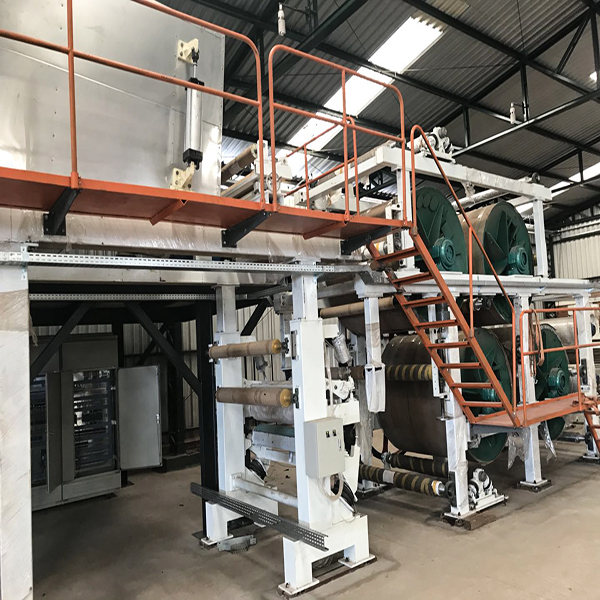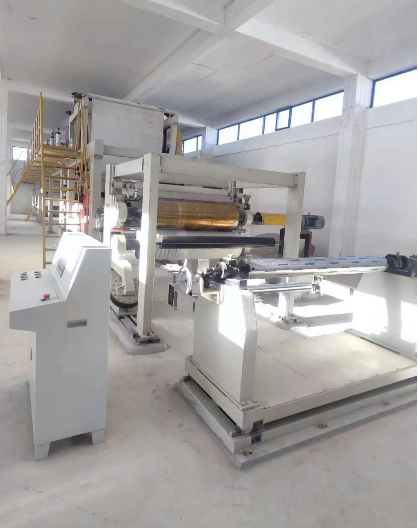Font Size:
In the papermaking process, an indispensable chemical is used, which is the defoamer. Why use a defoamer? The following article should answer your doubts.
The foam problem in water treatment in the papermaking process has troubled many people, such as initial foam debugging, surfactant foam, impact foam, peroxide foam, foam generated by adding non-oxidizing bactericide in circulating water treatment, etc., so the water The use of defoamers in processing is relatively common. This article comprehensively introduces the principle, classification, selection and dosage of defoamers!

Principle of defoaming
Defoamers, also known as defoamers, have the following principles:
01 The local surface tension of the foam is reduced leading to the collapse of the foam
The origin of this mechanism is that higher alcohol or vegetable oil is sprinkled on the foam, and when it dissolves into the foam liquid, it will significantly reduce the surface tension there. Because these substances are generally less soluble in water, the decrease in surface tension is localized to the foam, with little change in surface tension around the foam. The portion with reduced surface tension is strongly pulled around, stretched, and finally ruptured.
02 Destroying membrane elasticity and causing air bubbles to burst
When the defoamer is added to the foam system, it will diffuse to the gas-liquid interface, making it difficult for the foam-stabilizing surfactant to recover the elasticity of the film.
03 Promote liquid film drainage
The defoamer can promote the drainage of the liquid film, thus causing the bubbles to burst. The rate of foam drainage can reflect the stability of the foam. Adding a substance that accelerates foam drainage can also play a defoaming role.
04 Addition of hydrophobic solid particles can lead to bubble collapse
The hydrophobic solid particles on the surface of the bubbles will attract the hydrophobic end of the surfactant, making the hydrophobic particles hydrophilic and enter the water phase, thus playing the role of defoaming.
05 Solubilizing and foam-promoting surfactants can lead to bubble collapse
Certain low-molecular substances that can be fully mixed with the solution can solubilize the bubble surfactant and reduce its effective concentration. Low-molecular substances with this effect, such as octanol, ethanol, propanol and other alcohols, can not only reduce the concentration of surfactants in the surface layer, but also dissolve into the surfactant adsorption layer, reducing the tightness between surfactant molecules. degree, thereby weakening the stability of the foam.
06 Electrolyte breaks down surfactant double layer
For the interaction of the electric double layer of the surfactant with the help of the foam to produce a stable foaming liquid, the addition of common electrolytes can disintegrate the electric double layer of the surfactant to play a defoaming effect.

Classification of defoamers
Commonly used defoamers can be divided into silicone (resin), surfactants, paraffins and mineral oils according to their components.
01 Silicon (resin)
Silicone resin defoamer, also known as emulsion type defoamer, is used by emulsifying and dispersing silicone resin in water with an emulsifier (surfactant) and then adding it to wastewater. Silica fine powder is another silicon defoamer with better defoaming effect.
02 Surfactants
This type of defoamer is actually an emulsifier, which uses the dispersing effect of a surfactant to keep the foam-forming substance dispersed in a stable emulsified state in water, thereby avoiding the formation of foam.
03 Paraffins
Paraffinic defoamer is a defoamer made by emulsifying and dispersing paraffinic wax or its derivatives with an emulsifier. Its use is similar to that of surfactant-based emulsified defoamers.
04 Mineral oil
Mineral oil is the main defoaming ingredient. In order to improve the effect, sometimes metal soap, silicone oil, silicon dioxide and other substances are mixed together. In addition, various surfactants can sometimes be added in order to make the mineral oil easily spread to the surface of the foaming liquid, or to evenly disperse the metal soap in the mineral oil.
Selection of defoamer
The choice of defoamer should meet the following points:
01 Insoluble or poorly soluble in foaming liquid
To break foam, the defoamer should be concentrated and concentrated on the foam membrane. For the case of foam breaker, it should be concentrated and concentrated in an instant, and for the case of foam suppression, it should always be kept in this state. Therefore, the defoamer is in a supersaturated state in the foaming liquid, and it is easy to reach a supersaturated state only if it is insoluble or insoluble. Insoluble or insoluble, it is easy to gather at the gas-liquid interface, easy to concentrate on the bubble film, and to play a role at a lower concentration. For defoamers used in water systems, the molecules of the active ingredients must be strongly hydrophobic and weakly hydrophilic, and the HLB value is in the range of 1.5-3 for the best effect.
02 The surface tension is lower than that of the foaming liquid
Only when the intermolecular force of the defoamer is small and the surface tension is lower than that of the foaming liquid, the particles of the defoamer can immerse and expand on the foam film. It is worth noting that the surface tension of the foaming liquid is not the surface tension of the solution, but the surface tension of the foaming solution.
03 Has a certain degree of affinity with the foaming fluid
Since the defoaming process is actually a competition between the foam collapse speed and the foam generation speed, the defoamer must be able to quickly disperse in the foaming liquid so that it can quickly work in a wider range in the foaming liquid. To make the defoamer diffuse faster, the active ingredient of the defoamer must have a certain degree of affinity with the foaming fluid. If the active ingredient of the defoamer is too close to the foaming liquid, it will dissolve; if it is too sparse, it will be difficult to disperse. Only when the closeness is appropriate can the effect be good.
04 No chemical reaction with foaming fluid
The defoamer reacts with the foaming liquid. On the one hand, the defoamer will lose its effect, and on the other hand, harmful substances may be produced, which will affect the growth of microorganisms.
05 Low volatility, long acting time
First of all, it is necessary to determine the system that needs to use the defoamer, whether it is a water-based system or an oil-based system. Such as fermentation industry, it is necessary to use oily defoaming agent, such as polyether modified silicon or polyether. The water-based coating industry needs water-based defoamers and silicone defoamers. Select the defoamer, compare the amount added, and use the reference price to get the most suitable and economical defoamer product.

Defoamer dosage
There are many types of defoamers, and different types of defoamers require different dosages. Below we introduce the dosages of the six types of defoamers:
1. Alcohol defoamer: When alcohol defoamer is used, the dosage is generally within 0.01%-0.10%.
2. Grease defoamer: The amount of grease defoamer added is between 0.05%-2%, and the amount of fatty acid ester defoamer added is between 0.002%-0.2%.
3. Amide defoamer: The effect of amide defoamer is better, and the addition amount is generally within 0.002%-0.005%.
4. Phosphoric acid defoamer: Phosphoric acid defoamer is most commonly used in fibers and lubricating oils, and the addition amount is between 0.025%-0.25%.
5. Amine defoamers: Amine defoamers are mainly used in fiber processing, and the addition amount is 0.02%-2%.
6. Ether defoamer: Ether defoamer is widely used in paper printing, dyeing and cleaning, and the addition amount is generally 0.025%-0.25%.
The above is the introduction of the defoamer. It has to be said that the defoamer seems inconspicuous, but it has made great contributions to the smoothness and production of paper.
The principle of carbonless paper
2023-09-07Paper chemicals - detailed analysis of defoamers
2023-09-07Surface Sizing Process Affecting Moisture Resistance of Packaging Paper
2023-09-07Introduction of thermal & pressure sensitive dyes-ODB-2
2023-09-07What are the types of coated paper?
2023-09-07The principle of carbonless paper
2023-09-07Paper chemicals - detailed analysis of defoamers
2023-09-07Surface Sizing Process Affecting Moisture Resistance of Packaging Paper
2023-09-07Introduction of thermal & pressure sensitive dyes-ODB-2
2023-09-07What are the types of coated paper?
2023-09-07